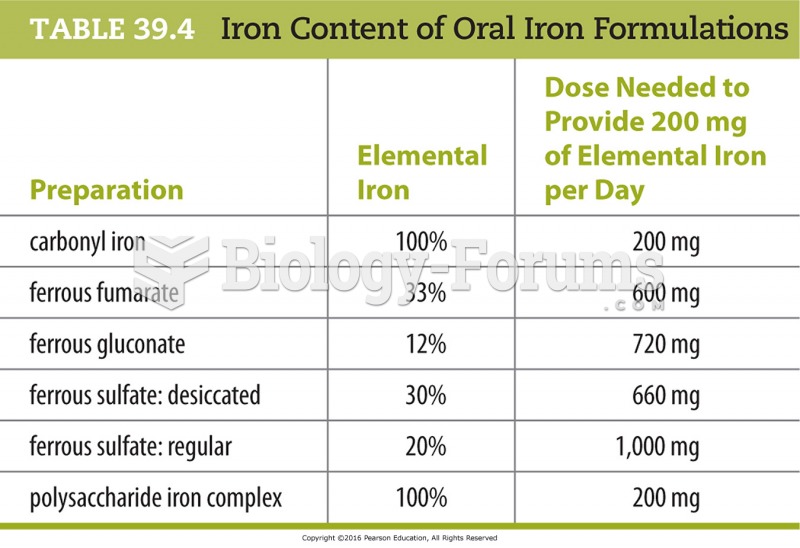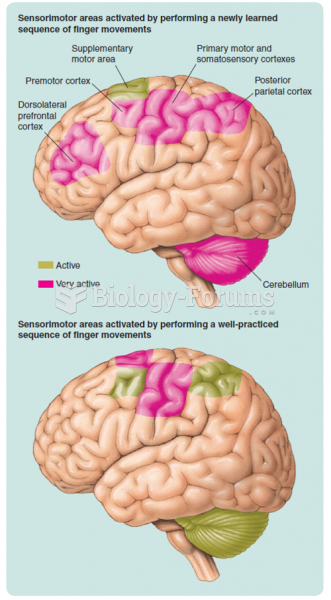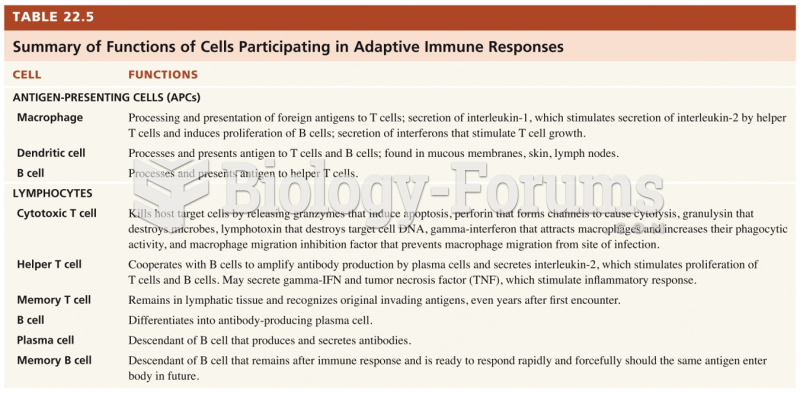Answer to Question 1
3
Rationale:
1. Tachycardia is a sign that iron-deficiency anemia is not resolving and activity tolerance is not improving.
2. Decreased alertness is a sign that iron-deficiency anemia is not resolving and activity tolerance is not improving.
3. Iron-deficiency anemia can result in less oxygen reaching the cells and tissues, causing activity intolerance. An indication that a 9-month-old child is tolerating activity and iron-deficiency anemia is resolving would be maintaining a respiratory rate of less than 50 (within a normal range for this age) during activity.
4. Muscle weakness is a sign that iron-deficiency anemia is not resolving and activity tolerance is not improving.
Answer to Question 2
3
Rationale:
1. Toddlers require a maximum of about 1 liter of milk per day. This toddler is consuming most of her calories from the milk, and thus is not hungry. The high fat content of the milk and the high sugar content of the fruit juice also are contributing to the child's higher weight-to-height percentile. Decreasing the amount and fat content of the milk and decreasing the intake of fruit juice will decrease calories and make the child hungry for other foods. This answer is appropriate, but does not address the problem of excessive milk consumption
2. Toddlers require a maximum of about 1 liter of milk per day. This toddler is consuming most of her calories from the milk, and thus is not hungry. The high fat content of the milk and the high sugar content of the fruit juice also are contributing to the child's higher weight-to-height percentile. Decreasing the amount and fat content of the milk and decreasing the intake of fruit juice will decrease calories and make the child hungry for other foods. This answer is appropriate, but does not address the problem of excessive milk consumption
3. Toddlers require a maximum of about 1 liter of milk per day. This toddler is consuming most of her calories from the milk, and thus is not hungry. The high fat content of the milk and the high sugar content of the fruit juice also are contributing to the child's higher weight-to-height percentile. Decreasing the amount and fat content of the milk and decreasing the intake of fruit juice will decrease calories and make the child hungry for other foods. The other answers are appropriate, but do not address the problem of excessive milk consumption.
4. Toddlers require a maximum of about 1 liter of milk per day. This toddler is consuming most of her calories from the milk, and thus is not hungry. The high fat content of the milk and the high sugar content of the fruit juice also are contributing to the child's higher weight-to-height percentile. Decreasing the amount and fat content of the milk and decreasing the intake of fruit juice will decrease calories and make the child hungry for other foods. This answer is appropriate, but does not address the problem of excessive milk consumption







